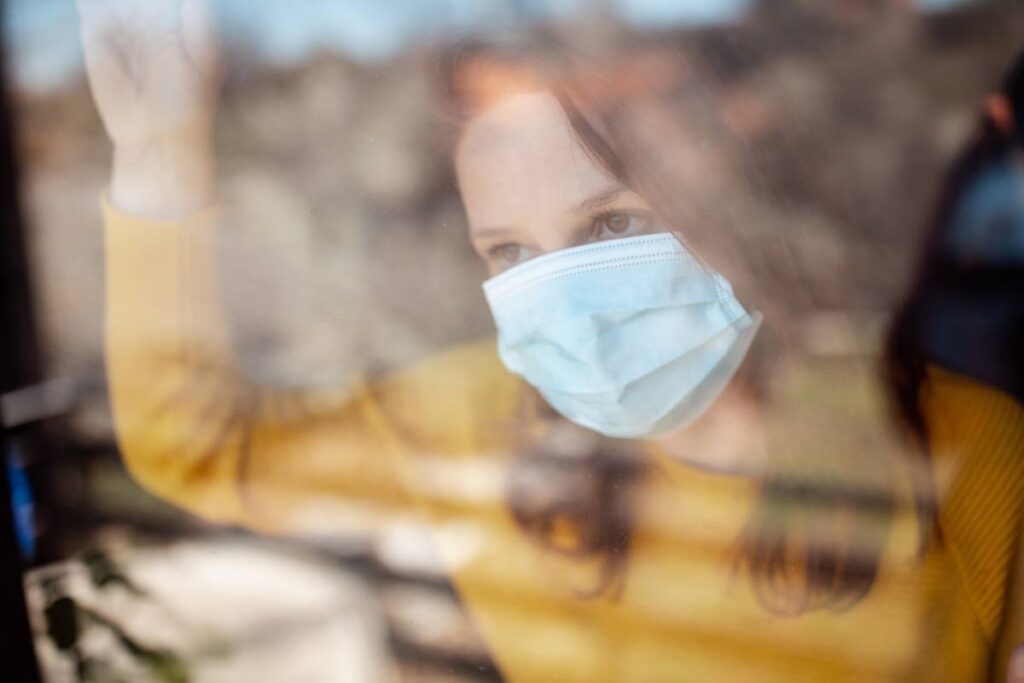Current CDC guidelines continue to advise persons who test positive for COVID-19 to isolate for a minimum of five days (4). While the CDC defines the start of isolation as the date of symptom onset, organizations such as schools and businesses may begin the isolation period on the day of the first positive test (1). Additionally, it remains unknown whether detectable amounts of viral RNA that remain in some patients even after symptoms have resolved could indicate that a person is still infectious (3). This lack of consistency around the timeline of isolation and the possibility that those who have clinically recovered could remain infectious creates confusion around best practices for determining infectiousness in COVID-19 patients.
To date, clinical studies have demonstrated that several factors can be used to determine infectiousness in COVID-19 patients. A study of participants in Boston University’s testing program in 2021 assumed that culture conversion—defined as the first negative culture result of a nasal swab sample with no subsequent positive culture—indicated that a patient was no longer infectious (1). Of this group of mostly young and healthy vaccinated individuals, 84% had culture-converted by Day 6 when counting from the first positive rapid test, and 71% had culture-converted when counting from symptom onset (1). Only 17% of participants remained culture-positive after the five-day period (1). These results support guidelines to isolate for five days. Additionally, they corroborate the CDC’s recommendation to continue masking until day ten, considering that a small fraction of participants remained infectious beyond five days but limited resources pose a barrier to exhaustive testing for every individual.
In another study examining demographic, immunologic, and clinical disease factors, levels of viral RNA in nasopharyngeal swab samples were used as an indication of a COVID-19 patient’s infectiousness (5). The study found a strong correlation between the presence of antibodies for COVID-19 and viral neutralization. Indeed, infectious virus was isolated from 58% of participants who were seronegative for antibodies, in contrast to only 7% of seropositive patients (5). However, as demonstrated, the results did not completely eliminate the possibility of infectious virus still remaining in patients who have detectable levels of antibodies.
Determining the viral load threshold above which a COVID-19 patient is assumed to be infectious is a critical component of continuing to strengthen isolation and masking guidelines. Increasing Ct-values, or Cycle Threshold Values, that indicate the amount of virus an infected person harbors, is thought to correlate with lowering infectivity. Indeed, Ct-values above 37-40 are generally considered to be a negative result (7). These values are based on the number of cycles of amplification needed to reach detectable amounts of viral RNA in polymerase chain reaction (PCR) testing; the higher the number of cycles, the lower the amount of original viral RNA (7). However, a definitive number of virions—the infective form of a virus—that is required to create an infection is yet to be determined, undermining the reliability of Ct-values as a marker of infectiousness (6).
While it remains too early to make definitive conclusions, such research supports the hypothesis that most healthy, vaccinated individuals who experience mild symptoms from COVID-19 cease to be infectious beyond day 5 after symptom onset, with a minority continuing to be infectious after clinical resolution. Although imperfect, testing for culture conversion, seropositivity of antibodies, and high Cycle Threshold Values offers clues for determining the infectiousness of COVID-19 patients.
References
- Bouton, Tara C et al. “Viral dynamics of Omicron and Delta SARS-CoV-2 variants with implications for timing of release from isolation: a longitudinal cohort study.” medRxiv : the preprint server for health sciences 2022.04.04.22273429. 5 Apr. 2022, doi:10.1101/2022.04.04.2227342
- “CDC Updates and Shortens Recommended Isolation and Quarantine Period for General Population.” Center for Disease Control and Prevention, 27 Dec 2021, https://www.cdc.gov/media/releases/2021/s1227-isolation-quarantine-guidance.html
- “Clinical Questions about COVID-19: Questions and Answers.” Center for Disease Control and Prevention, 26 Sept 2022, https://www.cdc.gov/coronavirus/2019-ncov/hcp/faq.html
- “Isolation and Precautions for People with COVID-19.” Center for Disease Control and Prevention, n.d., https://www.cdc.gov/coronavirus/2019-ncov/your-health/isolation.html#:~:text=If%20you%20test%20positive%20for,unable%20to%20wear%20a%20mask.
- Mollan, Katie et al. “Infectious Severe Acute Respiratory Syndrome Coronavirus 2 (SARS-CoV-2) Virus in Symptomatic Coronavirus Disease 2019 (COVID-19) Outpatients: Host, Disease, and Viral Correlates.” Clinical Infectious Diseases : an official publication of the Infectious Diseases Society of America vol. 75,1 (2022): e1028-e1036. doi:10.1093/cid/ciab968
- Platten, Martin et al. “SARS-CoV-2, CT-Values, and Infectivity-Conclusions to Be Drawn from Side Observations.” Viruses vol. 13,8 1459. 27 Jul. 2021, doi:10.3390/v13081459
- Service, Robert. “One number could help reveal how infectious a COVID-19 patient is. Should test results include it?” Science Insider, 29 Sep 2020, https://www.science.org/content/article/one-number-could-help-reveal-how-infectious-covid-19-patient-should-test-results
